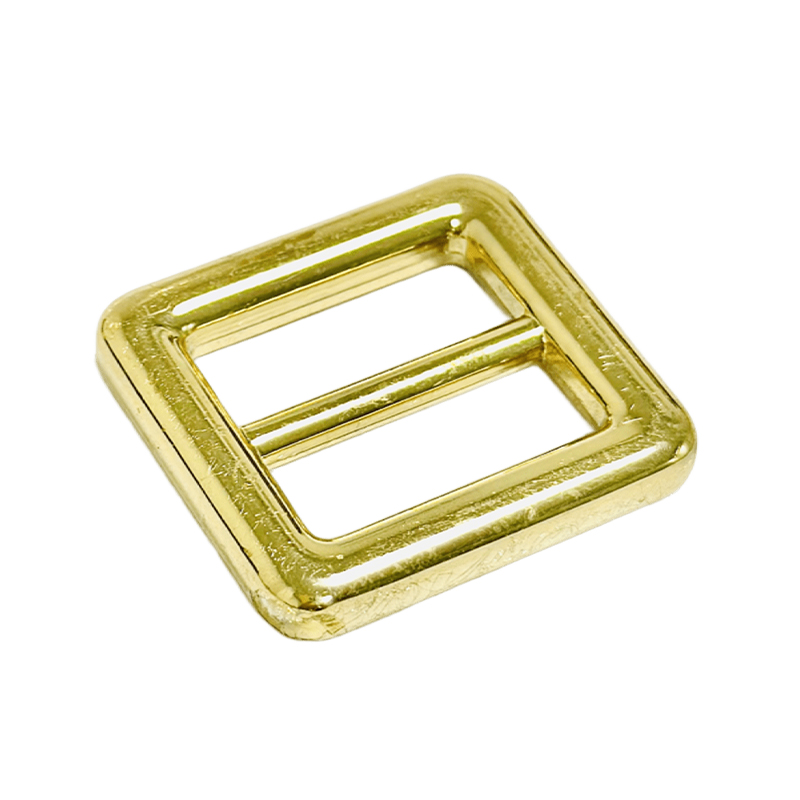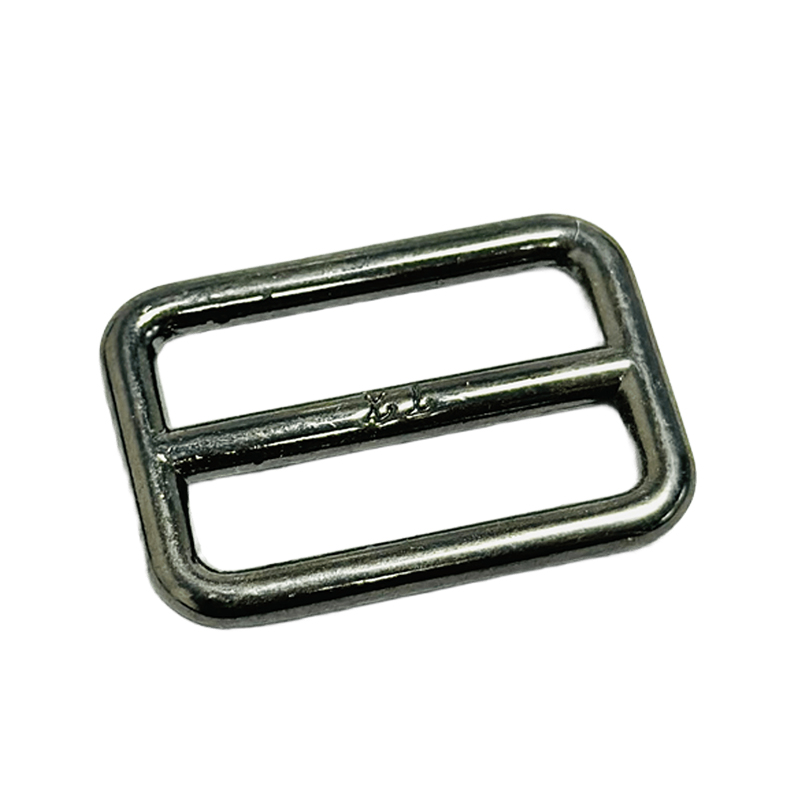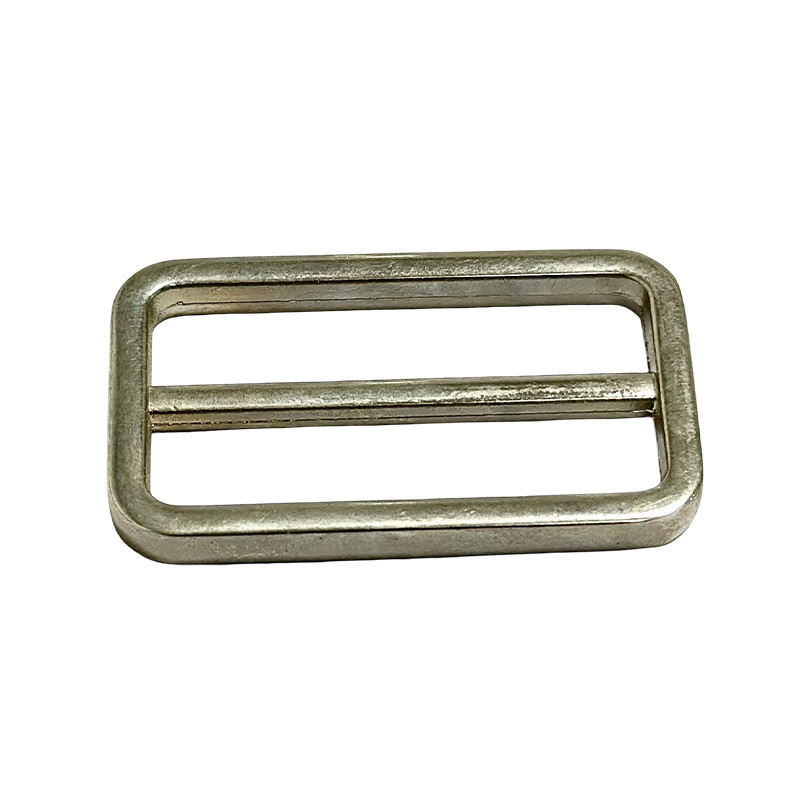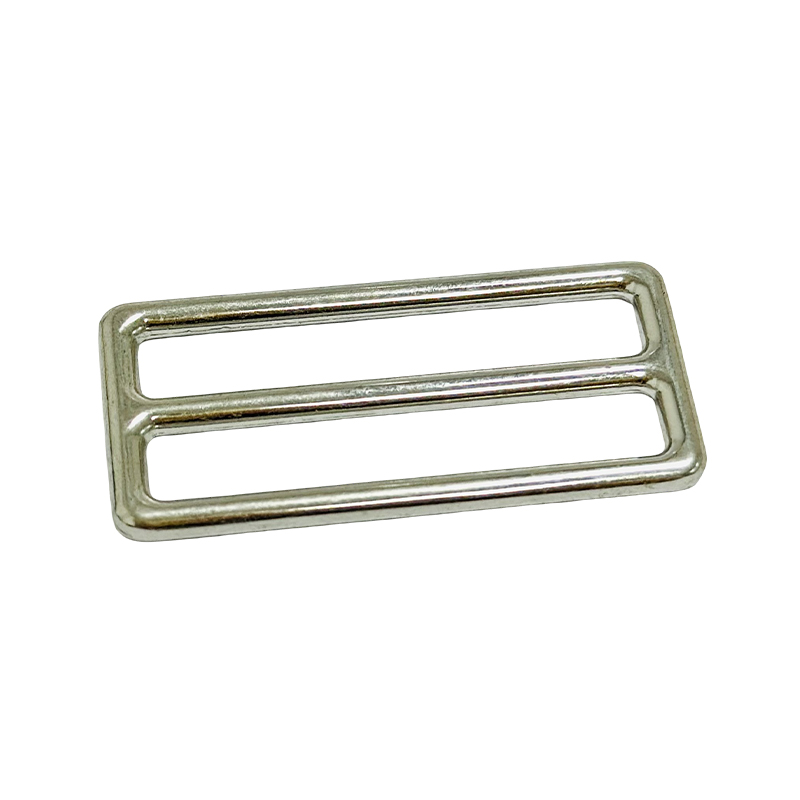The symmetrical design of the Japanese buckle—doesn't it perfectly appeal to those with an OCD-like need for order?
Release Time : 2025-10-01
In the chaotic and cluttered daily life, people often find solace in subtle order. A straight crease, aligned text, or perfectly fitting drawers—these seemingly insignificant details can subconsciously bring a sense of calm. The Japanese buckle, a small clasp on bags, notebooks, and clothing, has one particularly striking feature: its almost ritualistic symmetrical design. Unobtrusive yet elegant, it subtly resonates with our deep-seated preference for balance and order. Many people confess that seeing the two metal pieces of a closed Japanese buckle perfectly aligned evokes a profound sense of satisfaction—as if everything is in its place, the world is orderly.
This symmetry isn't the cold, mechanical replication of identical parts, but rather a harmonious rhythm. The Japanese buckle typically consists of two identical metal plates, connected by a central pivot, rotating symmetrically like butterfly wings. When closed, the two plates fit precisely, the axis is centered, and the edges align, forming a complete geometric shape—square, round, or resembling an ancient coin. This visual completeness aligns with our psychological expectation of "closure" and "completion." Unlike a zipper with a start and end, or Velcro with its looseness, it declares, simply and decisively: "Closed, no flaws."
For those sensitive to details, this symmetry provides not only functional reassurance but also emotional comfort. No crookedness, no misalignment, no awkwardness. Each closure is a miniature restoration of order. In a fast-paced life, this small certainty becomes a tangible stability. Wearing a bag with a Japanese buckle, an unintentional glance at the neatly closed clasp conveys a sense of order and completeness—no need to adjust or double-check.
On a deeper level, the symmetry of the Japanese buckle also embodies the philosophy of "moderation" and "balance" in Eastern aesthetics. It eschews ostentatious ornamentation and avoids emphasizing any single element; instead, it conveys a sense of understated completeness through harmonious balance and coordination. This design language resonates with the principles of axial symmetry in traditional Japanese architecture, the equilibrium of garden layouts, and even the rhythmic movements of the tea ceremony. It doesn't force attention, but subtly conveys a restrained beauty. This beauty, in fact, lies at the heart of its appeal to those with OCD—not obsessive perfectionism, but rather a natural yearning for harmony and purity.
The precision of materials and craftsmanship further reinforces this sense of symmetrical reliability. High-quality Japanese buckles are made of brass, stainless steel, or aluminum alloy, meticulously polished and electroplated, resulting in a smooth surface and a comfortable weight. The resistance when opening and closing is consistent, neither too loose nor too tight. This consistency allows the user to operate it intuitively, smoothly and predictably every time. Even after prolonged use, as long as the structure remains intact, the symmetry remains perfect, without any wear-related misalignment or jamming.
Ultimately, the reason why the symmetrical design of the Japanese buckle feels so comforting is that it resonates with our innate human need for order. It doesn't make a grand statement, but quietly and effectively counteracts chaos. In a world of uncertainty, a symmetrical buckle becomes a small, portable anchor. It reminds us that some things can still be perfectly aligned, in their rightful place, and just right. And perhaps, this is the gentle order that modern people crave most.
This symmetry isn't the cold, mechanical replication of identical parts, but rather a harmonious rhythm. The Japanese buckle typically consists of two identical metal plates, connected by a central pivot, rotating symmetrically like butterfly wings. When closed, the two plates fit precisely, the axis is centered, and the edges align, forming a complete geometric shape—square, round, or resembling an ancient coin. This visual completeness aligns with our psychological expectation of "closure" and "completion." Unlike a zipper with a start and end, or Velcro with its looseness, it declares, simply and decisively: "Closed, no flaws."
For those sensitive to details, this symmetry provides not only functional reassurance but also emotional comfort. No crookedness, no misalignment, no awkwardness. Each closure is a miniature restoration of order. In a fast-paced life, this small certainty becomes a tangible stability. Wearing a bag with a Japanese buckle, an unintentional glance at the neatly closed clasp conveys a sense of order and completeness—no need to adjust or double-check.
On a deeper level, the symmetry of the Japanese buckle also embodies the philosophy of "moderation" and "balance" in Eastern aesthetics. It eschews ostentatious ornamentation and avoids emphasizing any single element; instead, it conveys a sense of understated completeness through harmonious balance and coordination. This design language resonates with the principles of axial symmetry in traditional Japanese architecture, the equilibrium of garden layouts, and even the rhythmic movements of the tea ceremony. It doesn't force attention, but subtly conveys a restrained beauty. This beauty, in fact, lies at the heart of its appeal to those with OCD—not obsessive perfectionism, but rather a natural yearning for harmony and purity.
The precision of materials and craftsmanship further reinforces this sense of symmetrical reliability. High-quality Japanese buckles are made of brass, stainless steel, or aluminum alloy, meticulously polished and electroplated, resulting in a smooth surface and a comfortable weight. The resistance when opening and closing is consistent, neither too loose nor too tight. This consistency allows the user to operate it intuitively, smoothly and predictably every time. Even after prolonged use, as long as the structure remains intact, the symmetry remains perfect, without any wear-related misalignment or jamming.
Ultimately, the reason why the symmetrical design of the Japanese buckle feels so comforting is that it resonates with our innate human need for order. It doesn't make a grand statement, but quietly and effectively counteracts chaos. In a world of uncertainty, a symmetrical buckle becomes a small, portable anchor. It reminds us that some things can still be perfectly aligned, in their rightful place, and just right. And perhaps, this is the gentle order that modern people crave most.







